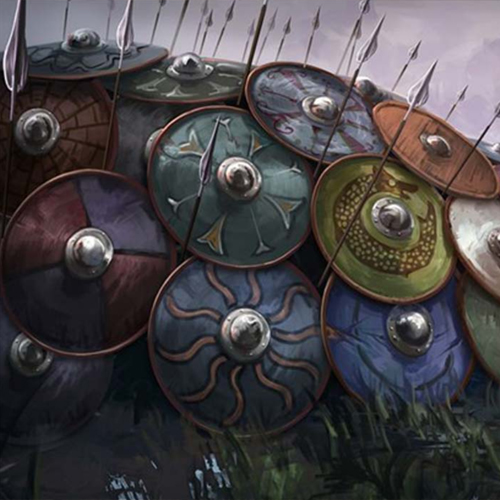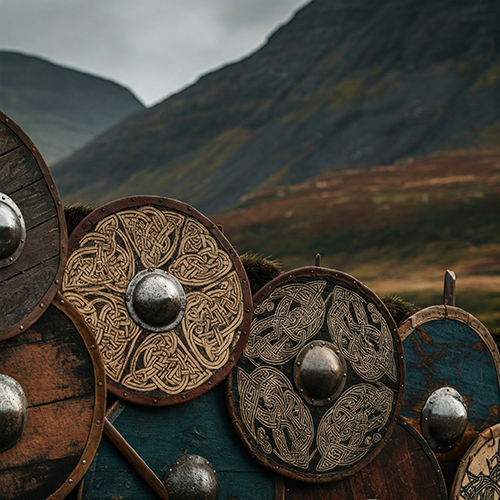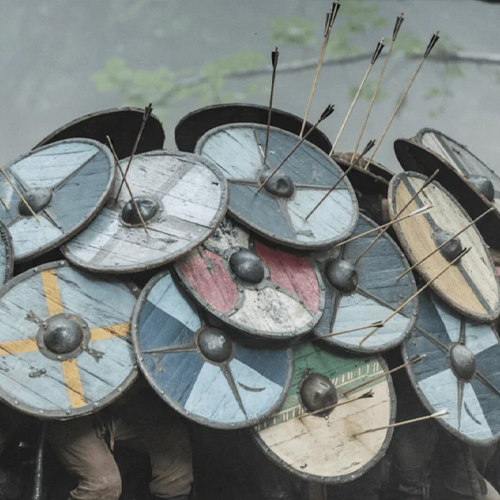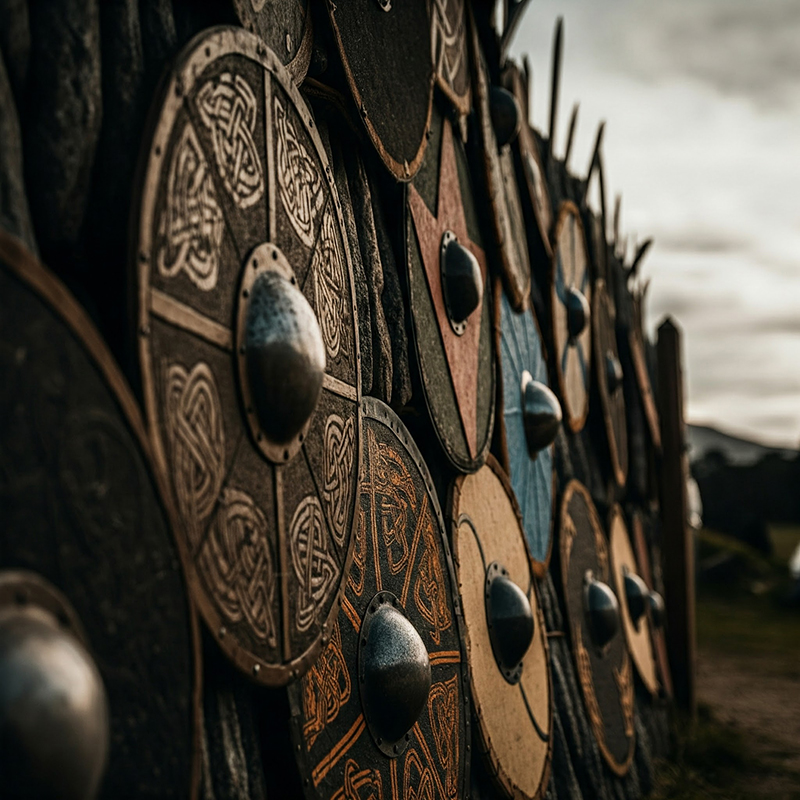Viking Blog
7 Secrets of the Viking Shield Wall That Struck Terror into Their Enemies
The Viking shield wall is one of history’s most iconic and effective battle tactics. Engineers and coordinators perfected this formation, a mix of both, over centuries. It allowed the Vikings to dominate opponents across Europe. Its strength lay in two things. First, the craftsmanship of Viking weapons and shields. Second, the ingenuity and adaptability of the warriors who wielded them. Here are the seven secrets that made the Viking shield wall a terrifying force:
1. The Synergy of Shield and Weapon
At the heart of the Viking shield wall was the Viking shield. It was a tool crafted with great care for both defense and offense. Craftsmen made Viking shields from thick wood, like oak, and rimmed them with iron. They were lightweight but durable. At their center was an iron boss, a dome that protected the hand and deflected strikes.
When warriors stood shoulder to shoulder in the shield wall, their shields interlocked. This created a barrier that was almost impossible to penetrate. The offensive capabilities of Viking weapons complemented this defensive strategy. In the right hands, warriors wielded axes, swords, or spears. They struck with precision through the gaps in the wall. The shield was not a passive object. Warriors used it to bash enemies, create openings, and disrupt formations. The Viking shield wall was a deadly tactic. It combined a strong defense with a relentless offense.

2. Iron Discipline and Perfect Coordination in the Viking Shield Wall
The Viking shield wall’s true power lay in the discipline and coordination of the warriors who formed it. Each man had to trust the others to hold their ground. A single breach could spell disaster for the entire formation. This required rigorous training and unwavering commitment to their leader’s commands.
From a young age, Viking warriors practiced moving and fighting as a unit. They learned to match their movements with their comrades. They kept a synchronized rhythm, even in the chaos of battle. The Viking shield wall could move as one. This allowed it to transition with ease between defense and offense. This sync was not tactical. It was psychological. It showed a united, unstoppable force to their enemies.
3. Tactical Flexibility for Any Battlefield
Unlike many battlefield tactics of the era, the Viking shield wall was not a rigid formation. It had a great degree of adaptability. They designed it for various terrains and combat scenarios.
- On flat, open plains: The shield wall stretched in a straight line. It was a strong, unbroken defense.
- In rough or uneven terrain: The formation could split into smaller, more mobile units. They would use the landscape to their advantage.
- Against cavalry: The Vikings changed their shield wall to a V-formation. This forced charging horses into a bottleneck, neutralizing their momentum.
This flexibility made the Viking shield wall effective on any battlefield. It could defeat any enemy.
4. Psychological Warfare Through the Viking Shield Wall
The sight of a Viking shield wall on the battlefield terrified even the bravest foes. Vikings were not only skilled warriors but also masters of psychological warfare.
Central to this fear was the Viking belief in Valhalla, the hall of fallen warriors. Vikings believed that dying in battle was the ultimate honor. This belief fueled their fearlessness. They fought with unmatched ferocity. They chanted war cries and banged their shields as they advanced.
For their enemies, the Viking shield wall was a double threat. It was a physical barrier and a psychological assault. The Vikings’ discipline, unity, and ferocity often shattered enemy morale before battles.

5. Surprise as a Force Multiplier
People knew the Vikings for their surprise attacks. The shield wall was key to these strategies. They often ambushed unsuspecting foes, using speed and cunning to seize the advantage.
Once they secured the surprise, the Viking shield wall became a tool of consolidation. It let the Vikings regroup, hold their ground, and push forward with great force. The surprise and strength of the shield wall often left enemies unable to recover. This led to swift, decisive victories.
6. Adaptation to Enemy Tactics and Weapons
The Vikings were relentless learners. They observed their enemies’ tactics and adapted to them without interruption. Their adaptability extended to their use of the shield wall. It evolved to counter specific threats.
- Against archers: Viking warriors overlapped their shields to form a “roof.” This created a defense like the Roman testudo (tortoise) formation. This maneuver rendered arrows ineffective, allowing the wall to advance unscathed.
- Against heavily armored infantry: The Vikings exploited gaps in enemy lines. They used long spears and axes to strike vulnerable points.
The Vikings analyzed their opponents and devised countermeasures. This kept their shield wall effective against evolving warfare.
7. A Constantly Evolving Tactic
The Viking shield wall was not a static strategy. They refined and adapted it over centuries of warfare. As Viking warriors faced new challenges, they adopted new tactics.
This evolution included new weapons and complex formations. It also included tactics tailored to specific battlefields. The Vikings’ tactics made the shield wall the top force on the battlefield.

Conclusion
The Viking shield wall was more than a defense. It was a symbol of the ingenuity, discipline, and ferocity of Viking warriors. The Vikings combined unmatched skill, flexibility, and brutal tactics. They used endless innovation, too. They turned the shield wall into a weapon of fear and destruction.
This tactic won many battles. It made the Vikings feared warriors. Their shield wall proves the power of strategy, unity, and adaptability in adversity.


















